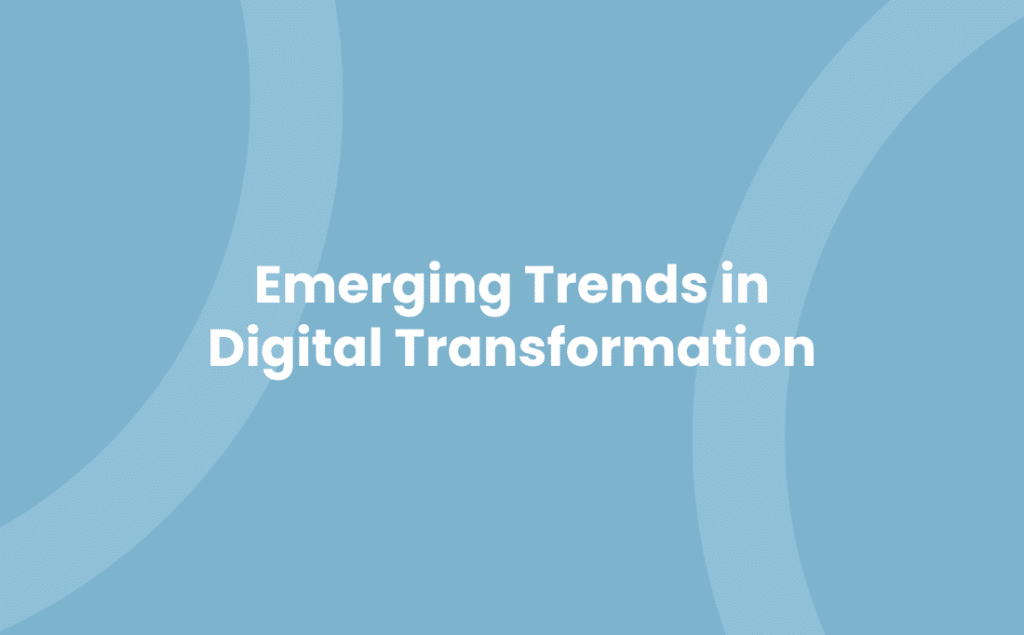Imagine a future where technology is not just a tool, but an integral part of your everyday life. This isn’t some sci-fi fantasy, it’s the reality of digital transformation. It’s the driving force behind innovative solutions, changing everything from the way businesses operate to how we interact with the world. But what does the future hold for digital transformation?
You’re about to embark on a journey into the digital future. We’ll delve into the trends shaping this landscape and explore what this means for you. Whether you’re a tech enthusiast, a business leader, or someone curious about the future, this article is your guide to understanding the future outlook of digital transformation. So, fasten your seat belts, it’s time to explore the digital horizon.
Understanding Digital Transformation
You may consider digital transformation as implementing new technologies in your daily operations. However, the essence of digital transformation runs deeper than that. It represents a shift in your company culture, integrating digital technology into all facets of business. This disruption not only alters how you operate and deliver value — it redefines customer relationships, performance, and your future direction.
Embracing digital transformation involves adopting innovative technologies to streamline operations and improve customer service. Examples include the application of artificial intelligence in data analysis or using IoT devices to monitor and adjust industrial processes in real-time. By blurring physical and digital barriers, you exercise flexibility in responding to changing business environments. Viewed through this lens, digital transformation becomes a continuous, iterative journey.
Reflecting on recent global events, it’s clear that organisations that prioritised digital transformation faced less disruption. They quickly adapted to remote working or switched to online trading as physical restrictions became commonplace. It serves as proof that digital transformation isn’t a luxury — it’s a business imperative.
Progress in digital innovation indicates that the future of digital transformation promises exciting opportunities. Advancements in cloud computing and big data analytics predict a decentralised, data-driven future where every process is optimisable, every decision data-validated. Imagine tailoring every customer interaction using insights gleaned from patterns in trillions of data points — that’s the transformative power of digital technology.
The digital transformation outlook expects technologies such as Big Data, AI, and the Internet of Things (IoT) to continue gaining ground. Subsequently, skills in these areas may become paramount for the workforce. Simultaneously, ethical and security concerns might demand prioritised attention as digital technology wins more ground.
Given these developments, understanding digital transformation is crucial. It’s the only path that leads your business to anticipated innovation, efficiency, and ultimate survival amidst the ongoing digital revolution. Precisely, this comprehending marks the beginning of the journey into the thrilling vista of the digital future.
Drivers of Digital Transformation
Digital transformation’s outlook hinges on several key drivers. By understanding these, you’re poised to plan and execute strategies that allow your business to thrive in the future digital landscape.
- Customer Expectation: Customers have come to expect digital services and tailored interactions. In response, businesses are adopting digital approaches to meet these elevated customer expectations. For example, they’re using AI and big data analytics to offer personalised and instant customer service.
- Technological Advancements: Continuous advancements in technology are primary drivers of digital transformation. Ground-breaking Technologies like AI, IoT, and cloud computing are prominent examples, offering an array of possibilities in how businesses operate and deliver value.
- Data: Data stands as a vital driver for digital transformation. It’s now the heartbeat of strategic decision making. With big data technologies, enterprises are harnessing vast amounts of data and turning it into actionable insights.
- Innovation and agility: Innovation and agility aren’t just desirable attributes; they’re prerequisites in the digital age. Companies embracing a culture of innovation find it easier to adapt to new technologies and changing market dynamics.
- Investment in digital skills and leadership: As digital technology gets more central in operations, the skills to manage and maximise its use are invaluable. Investment in training the workforce and leadership in digital skills has become key.
Each of these drivers is significant, yet their relative importance varies based on particular business context, industry, and objectives. A sound understanding of these drivers can inform holistic strategies, positioning your business favourably within the future of digital. Do acknowledge that they present not just opportunities but challenges too. Hence, considerations for things like security, ethics, and organisational change, while adopting new technologies, is crucial.
Analysing the Future Outlook of Digital Transformation
Peering into the future of digital transformation, technological advancements continue to play a major role. Artificial Intelligence (AI) and the Internet of Things (IoT), two previously highlighted technologies, prop up the digital framework, promoting smoother operations and heightened customer relationships.
AI serves as a significant driver. For instance, AI-powered chatbots epitomise digital customer service, providing instant, personalised responses to satisfy user demand for instant service. IoT devices, on the other hand, exemplify digital transformation, creating interconnected systems that streamline work and enhance customer experiences.
Data continues to hold a pivotal role, with an increased focus on metrics-based decision-making. Companies grasp onto actionable insights from data analytics to inform business strategies. For example, an analysis of customer behaviour data helps tailor digital processes to most effectively meet user preferences and needs.
The digital transformation outlook also depends on businesses nurturing innovation and agility. A company’s ability to adapt to the dynamic digital landscape lies at the core of successful transformation, with strategies that encourage and reward innovation performing the best.
Part of successfully traversing the digital future hinges on the development of digital skills and leadership, understanding that people‚ not just technology‚ power transformation. Businesses investing in reskilling employees and integrating digital-savvy leadership indicate trends towards a more tech-empowered workplace.
Challenges such as security, ethics, and organisational change present hurdles in digital transformation. To ensure future readiness, businesses need to address these issues head-on, implementing robust systems to safeguard data, promoting ethical digital practices, and fostering a culture open to change.
In synthesising, the future of digital hinges on a set of interlinking variables, from technological advancements to the role of data, from the call for innovation and agility to the importance of human capital, and the pragmatic handling of potential barriers. As the digital age barrels forward, businesses must keep pace, eyeing opportunities and growth in the landscape.
Industry Case Studies on Future Digital Transformation
Reviewing industry case studies offers insights into the future digital transformation outlook.
Firstly, examine MasterCard, a leading global payment solutions provider. They made extensive use of Artificial Intelligence (AI). AI provided predictive analytics, helping MasterCard make significant inroads in fraud detection.
Secondly, British multinational energy company, BP, used cloud computing and Internet of Things (IoT) technology. They streamlined operations across all of their oil rigs. They generated a wealth of real-time data for predictive maintenance, improving safety and operational efficiency.
Thirdly, dig into the case of traditional American retailer, Walmart. Going digital, they enhanced customer experiences. E-commerce efforts were complemented by their brick-and-mortar stores, successfully bridging the divide between digital and physical shopping.
Fourthly, General Electric, an industrial multinational conglomerate, used digital transformation to evolve. Creating a digital twin of their product, a virtual replica, provided meaningful insights. Consequentially improving product performance, cutting downtime costs.
Lastly, notice the Pew Research Centre, an American think tank using Big Data. For example to assess social and demographic trends. Guided effective decision-making and strategy development.
By exploring these case studies, recall that continued investment in technology underpins future growth. With technology advancements like AI, cloud computing, IoT and Big Data, successful transformation is clear.
Remember, fostering an environment that encourages innovation remains key. Barriers may present complexity. However, judicious navigation can lead to powerful digital transformation. It’s about succeeding in this digital landscape.
Challenges and Opportunities in the Digital Transformation Landscape
Delving into the digital transformation landscape, one finds twofold dimensions: challenges and opportunities. Both elements are essential in shaping the future digital transformation outlook.
Challenges in Digital Transformation
Fostering a digital-first environment presents certain hurdles. Firstly, obtaining digital skills emerges as a prime issue: mastery over AI, data analytics, cloud computing, and similar technologies demands considerable resources. For example, Mastercard utilises AI for fraud detection – an implementation that requires substantial knowledge in the field.
Secondly, adapting to new processes and structures can be intricate. Let’s take BP, which adopted cloud computing and IoT for predictive maintenance. This will have required significant changes to traditional maintenance practices, manifesting as a challenge.
Lastly, security can cause unease, as digital transformations amplify the risk of cyber threats. Without appropriate protection measures, crucial data could be compromised.
Opportunities in Digital Transformation
Yet, these challenges are counterbalanced by ample opportunities. Chief among these is an elevated customer experience. For instance, Walmart employed digital methods to make shopping a breezy affair, proving that digital transformation can shore up customer relations.
Additionally, digital transformation paves the way for innovation, resulting in improved efficiency and novel business prospects. General Electric’s use of digital twins is an excellent example of exploiting this opportunity.
At the enterprise level, informed decision-making based on big data provides a significant edge in the competitive landscape. The Pew Research Centre’s use of big data for vital decision-making interprets this boon perfectly.
Ultimately, glaring challenges coincide with the potential rewards introduced by digital transformation. The key lies in leveraging the latter to overcome the former, highlighting the importance of ongoing technology investment and firm leadership in maintaining this balance. This exploration forecasts a promising future of digital in business, enriched by the continuous integration of AI, IoT, advanced data analytics, and more.
Conclusion: Reflecting on the Future of Digital Transformation
As you’ve delved into the world of digital transformation, you’ve seen how it’s more than just a buzzword. It’s a fundamental shift in how businesses operate and interact with customers. From AI to cloud computing and the importance of data, these are the key drivers that are shaping the future. The case studies from MasterCard, BP, Walmart, General Electric, and Pew Research Centre serve as real-world examples of successful digital transformation.
Yet, it’s not without its challenges. Acquiring digital skills, adapting to new processes, and managing security risks are just some of the hurdles you’ll need to overcome. But the rewards are well worth it. Enhanced customer experiences, increased innovation, and informed decision-making through big data are just some of the opportunities that await.
Remember, ongoing investment in technology and strong leadership are crucial for navigating this digital landscape. The future of digital transformation is promising, enriched by AI, IoT, advanced data analytics, and more. So, are you ready to embrace it?


